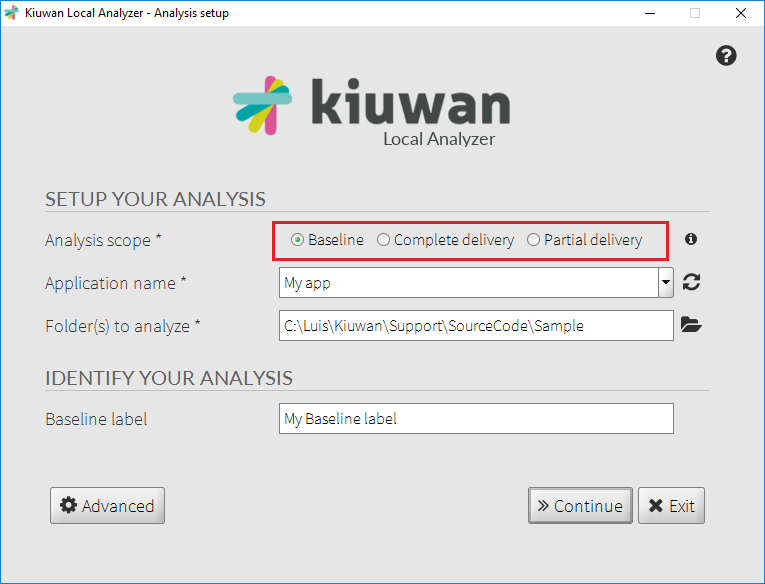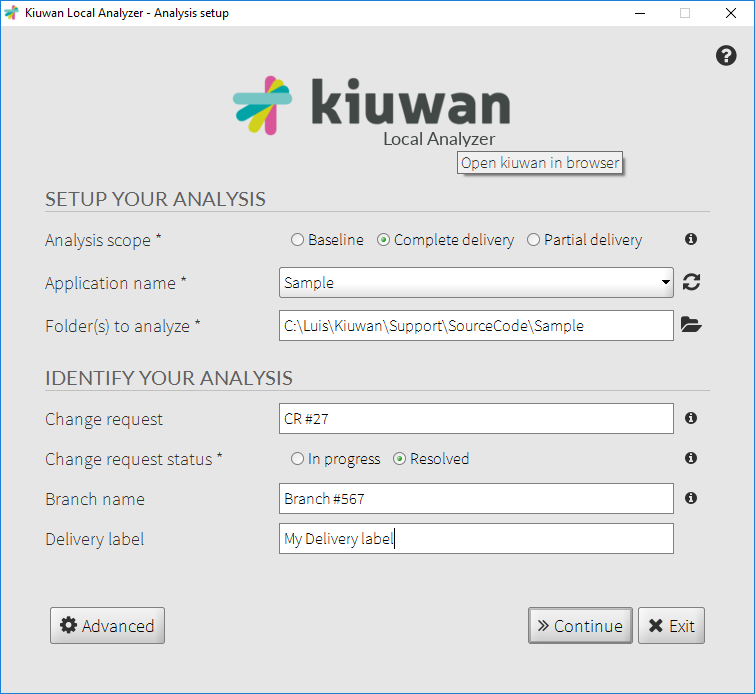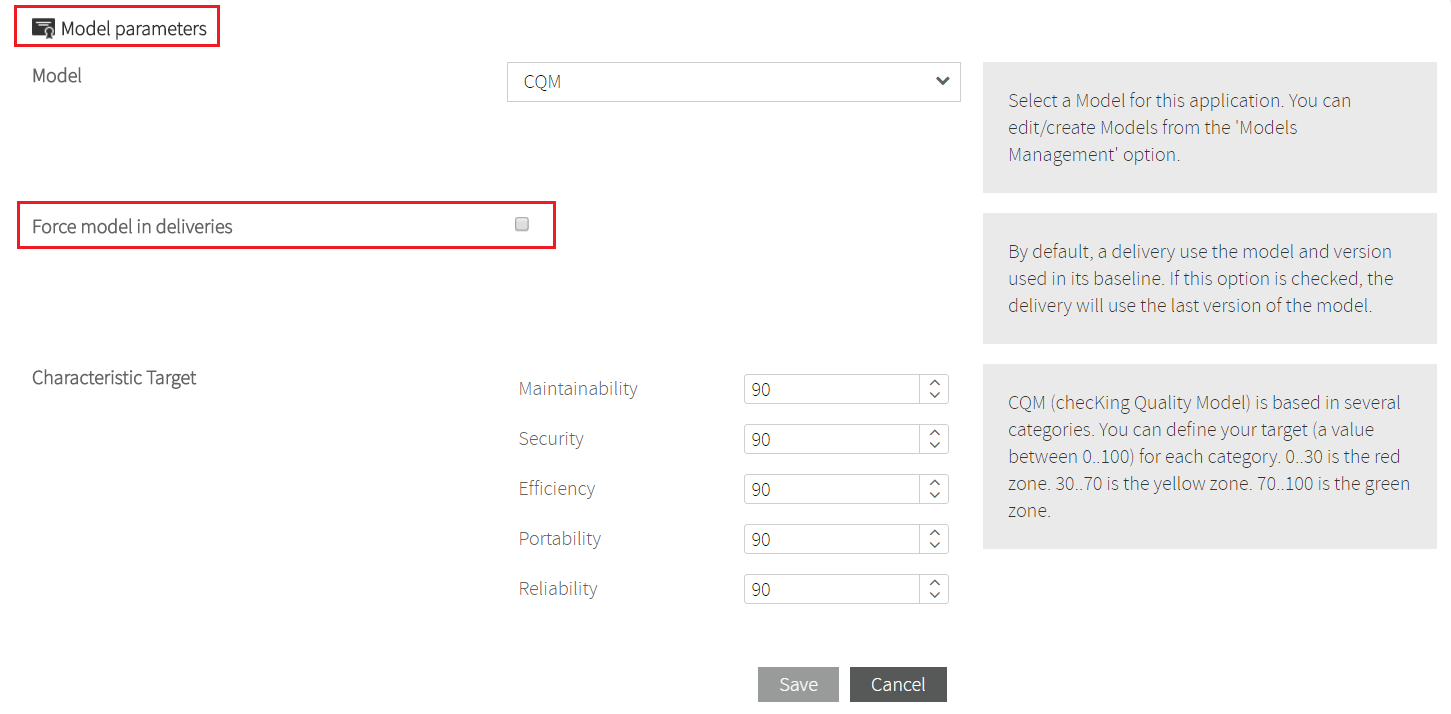At time of running a Kiuwan analysis, you can specify the scope of the analysis.
If you are running your analysis in the cloud, that analysis will be always considered as a Baseline analysis. To define other scopes, you should use Kiuwan Local Analyzer (KLA).
Previously to run a new analysis with KLA, you must select a scope depending on the type of analysis you want to run
- Baseline: development milestones are usually analyzed as baselines
- Complete delivery: an important delivery of the whole application
- Partial delivery: a delivery usually associated to a change request
KLA in CLI mode also allows to specify scope analysis options.
Please visit Code analysis using the downloaded agent#Analysisscope documentation for specific help on how to do it.
Baseline Analysis
Selecting Baseline option, Kiuwan will run the analysis as a baseline analysis of the selected application. The analysis will be run by default with the Model associated to the application, or you can specify a different model clicking on "Advanced" button.
After running the Baseline analysis, "View Page" button will take you to Summary panel of the selected application Dashboard.
Delivery Analysis
In case of a Delivery analysis, Kiuwan allows to specify further details.
The Delivery can be specified as Complete or Partial. This depends on whether you're analyzing the complete application (Complete delivery) or a portion of it (Partial delivery).
Before to run a Delivery analysis, please be sure that a Baseline analysis exists. Otherwise, you will not be able to run a Delivery analysis.
Also, note that in Delivery mode it's not allowed to change the model. Application's model will be used for the analysis.
See Deliveries and Model Management for further details on model management when using deliveries
You can specify Change Request (CR) name (or id). This will allow you to link this analysis to a specific change request as considered in your ALM process.
Also, you can specify the Change Request Status to link analysis to different phases of your development process. When analyzing a delivery, you can indicate CR status:
- In progress: Use this option when CR is under development but you want to inspect Kiuwan results, know the Audit status but not include delivery results in overall statistics (please note that only "Resolved" deliveries will be included in Governance statistics). Typical uses might be analyses launched every day in Continuous Integration or for discrete analyses after concrete code changes.
- Resolved: This is the default value, use this option when the delivery to analyze is stable enough to be promoted to a testing/production environment.
Important: Only Deliveries with Resolved CR Status will be considered in Governance statistics.
If the delivery were associated to a branch in your SCM system, you can specify it in Branch Name field.
Finally, you can associate a label to this Delivery analysis in Delivery Label field.
Any Delivery analysis will automatically run the Audit associated to the selected application. After running the analysis, the View Results button will take you to the Audit page results, where you will see the results of the Audit and related information. Please, visit Audits Management for specific help on Audits.
KLA in CLI mode also allows to specify delivery analysis options.
Please visit Code analysis using the downloaded agent#CommandLineInterface(CLI)script documentation for specific help on how to do it.
Deliveries and Model Management
By default, when you run a 'delivery' analysis, Kiuwan retrieves the model and version used in the baseline to run the analysis with the same model.
If you are tunning your model, or need to run the analysis with a more recent model version, you can overwrite this behaviour in the application settings window, enabling Force model in deliveries checkbox.


